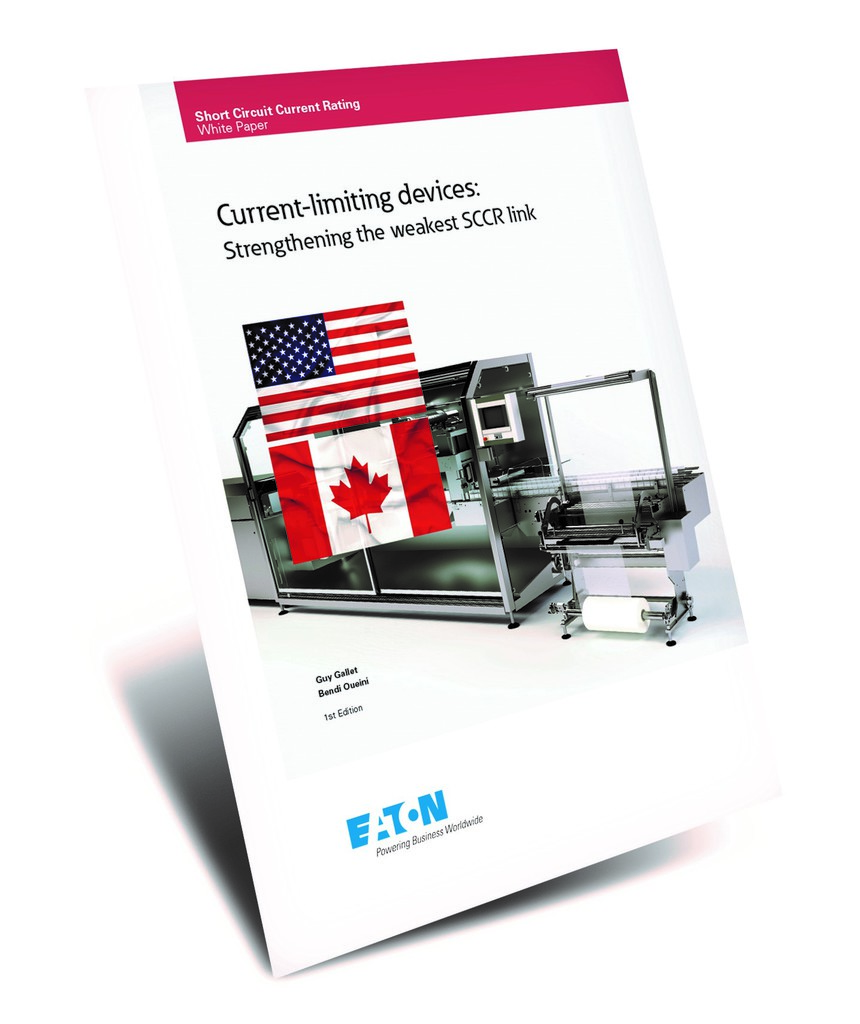
 |
Charlotte Stonestreet
Managing Editor |
Editor's Pick
Changes to North American National Electrical Code
09 January 2017
Eaton has published a white paper entitled “Current-limiting devices: Strengthening the weakest SCCR link” and a new control panel design guide according to UL 508A. New short-circuit protection requirements are being implemented by the North American National Electrical Code (NEC) in 2017.

The white paper reviews why short-circuit current ratings (SCCRs) are important, expected changes to the legislation, how to determine the equipment SCCR and importantly, why SCCR should be considered at an early stage. The White Paper and guide advise OEMs how they can comply, while designing equipment with enhanced safety and reliability so they can better support their end customers.
It is essential for any manufacturer exporting equipment worldwide to be aware of local legislation changes, and to take the necessary steps to conform. Changes to the NEC will enable installers, inspectors and approvers to verify that the installed equipment’s SCCR is equal to or greater than the available fault current, and therefore compliant with the other code sections dealing with equipment installations.
In any manufacturing facility, the hazards of fire, damage to equipment, and personnel safety are of great importance and can be extremely costly. In the event of a short circuit in a control panel inadequately protected equipment can expose personnel to fire, arc flashes, electrical shock and even explosions. By implementing sufficient SCCR, OEMs will be able to ensure their equipment provides the highest level of protection, enabling their customers to protect their operators as well as minimising downtime. The paper outlines in detail two examples of how the SCCR was increased, including the necessary calculations, and the resulting improvement.
OEMs are also continuously under pressure to make efficiencies and cost savings in their businesses, and it is important to plan in advance rather than devising a resolution to inadequate equipment SCCR in the field. There is no guaranteed quick or easy solution to address inadequate SCCR once equipment is installed. Only by planning prior to installation can manufacturers avoid further costs and delays.
Research indicates that more than half of OEMs design to typical minimum equipment SCCRs of 5 kA. The new code requirements however, stipulate that the available fault current must be marked at the location where a variety of equipment is to be installed including machinery, HVAC, elevator control panels and energy storage equipment. As the stated fault current can greatly exceed 5 kA, the equipment becomes the weakest link, requiring additional protection.
“Designing an equipment SCCR plan or implementing an SCCR solution can be difficult, but it doesn’t have to be,” says Dirk Meyer, Manager Industrial Control Division Applications at Eaton. “By understanding the standards and knowing the best practices, the equipment SCCR can be determined and if necessary, what approved methods are needed to increase those ratings.”
The rules are unclear and difficult to apply for the majority of manufacturers. As an international company, Eaton can help clarify the rules, and provide consultancy and a range of solutions to help machine builders achieve equipment SCCR code compliance easily and efficiently. These include a complete portfolio of Bussmann series fuses as well as circuit breakers, motor circuit protectors and combination controllers, and current-limiting overcurrent protective devices.
The whitepaper and guide are available free to download from www.eaton.eu/export
- App eases operation
- High performance sensors
- CANopen option
- Sectional load sense relief valve
- Data transparency - the key to optimised operation
- App offers tailored control
- Optimum safety & reliability
- Eaton adds Ethernet connectivity to MTL830 range multiplexers
- Touch goes HD
- White paper helps machine builders save money
- No related articles listed


















